
Movies Home / Entertainment Channel / Bullz-Eye Home
We here at Bullz-Eye always knew that we wanted to run a piece in conjunction with the release of "Harry Potter and the Half Blood Prince," but what we didn't know was what kind of piece it would be. We considered the matter, and we came to the conclusion that it would've been a little too easy to whip up a list of our favorite Hollywood wizards. In the midst of the discussion, however, an observation was raised about the film itself: what's going to happen to these kids – Daniel Radcliffe, Rupert Grint and Emma Watson – after the last of the "Harry Potter" books has been adapted for the silver screen? Will they be able to rise above their roles and find work elsewhere, or are they destined to be remembered solely as Harry, Ron and Hermione? From there, we quickly began to bandy about the names of other folks who have and haven't been able to score success in other cinematic identities, and the piece began to write itself. Ultimately, only one of our selections seemed impossible to pigeonhole as either "Forever Typecast" or "Escaped Typecasting," and when you see that actor's name, we think you'll nod your head knowingly and understand exactly why we had that problem.
Christopher Reeve, AKA Superman
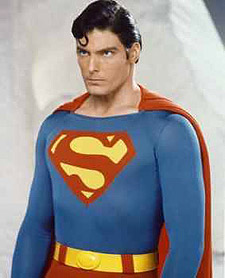 There are worse roles one can be remembered for than the Man of Steel, but as Kirk Alyn and George Reeves would tell you, once you've worn the cape and the big red S, it's damned hard to get people to see you without it. In Reeve's case, much of the problem stemmed from being a virtual unknown when he scored the break of a lifetime and got hired to play the universe's most famous Kryptonian. Although time has, appropriately enough, been very good to his first post-"Superman" film ("Somewhere in Time"), it certainly wasn't a box-office smash. Those who were aware of Reeve's status as a Juilliard-trained actor were likely unsurprised by his decision to spend his time between "Superman" sequels pursuing parts in such commercially-questionable films as "Monsignor," set during World War II, "The Bostonians," the Merchant-Ivory film based on the Henry James novel, and "The Aviator," George Miller's tale of a 1920's mail pilot. To everyone else, however, it probably just looked like he was trying desperately to distance himself from the role that had established him. In truth, that didn't really start until after the last of the "Superman" films, with 1988's "Switching Channels," but people just didn't buy the guy in a romantic comedy…or in horror films, either, as the 1995 remake of "Village of the Damned" proved. The great acting continued – see "Remains of the Day" for proof – but nothing seemed to supplant Superman. Reeve, who died in 2004, obviously ended up carving a new legacy for himself, with his efforts to increase funding for research toward treatments and cures for paralysis caused by spinal cord injury and other neurological disorders. But if he hadn't had that fateful horseback-riding accident in 1995, would he have escaped from his most famous role? We'll never know. – Will Harris
There are worse roles one can be remembered for than the Man of Steel, but as Kirk Alyn and George Reeves would tell you, once you've worn the cape and the big red S, it's damned hard to get people to see you without it. In Reeve's case, much of the problem stemmed from being a virtual unknown when he scored the break of a lifetime and got hired to play the universe's most famous Kryptonian. Although time has, appropriately enough, been very good to his first post-"Superman" film ("Somewhere in Time"), it certainly wasn't a box-office smash. Those who were aware of Reeve's status as a Juilliard-trained actor were likely unsurprised by his decision to spend his time between "Superman" sequels pursuing parts in such commercially-questionable films as "Monsignor," set during World War II, "The Bostonians," the Merchant-Ivory film based on the Henry James novel, and "The Aviator," George Miller's tale of a 1920's mail pilot. To everyone else, however, it probably just looked like he was trying desperately to distance himself from the role that had established him. In truth, that didn't really start until after the last of the "Superman" films, with 1988's "Switching Channels," but people just didn't buy the guy in a romantic comedy…or in horror films, either, as the 1995 remake of "Village of the Damned" proved. The great acting continued – see "Remains of the Day" for proof – but nothing seemed to supplant Superman. Reeve, who died in 2004, obviously ended up carving a new legacy for himself, with his efforts to increase funding for research toward treatments and cures for paralysis caused by spinal cord injury and other neurological disorders. But if he hadn't had that fateful horseback-riding accident in 1995, would he have escaped from his most famous role? We'll never know. – Will Harris
Roger Moore, AKA James Bond
 Unlike his primary predecessor, once Roger Moore was cast as superspy 007, it was a part he found nearly impossible to escape. It didn't help matters that Moore's acting range was always pretty limited, or that prior to stepping into the role of Bond, he was largely known for playing characters that were somewhat similar to Bond in the TV series’ "The Saint" and "The Persuaders." But from '73 to '85 he was James Bond, and following Sean Connery so successfully was no mean feat – just ask George Lazenby. By the time Moore left Bond, he was 58, and the roles pretty much dried up, although he's always seemingly embraced his most famous part, and managed to play Bond types in bad movies like "Boat Trip" and "Spice World." Indeed, he seems to have nothing but fond memories of that time in his life, as is evidenced by the full set of commentary tracks he provided for his Bond films on the most recent DVD releases of his 007 tenure. His humility is perhaps his greatest asset, and these days he devotes nearly all of his time to UNICEF. – Ross Ruediger
Unlike his primary predecessor, once Roger Moore was cast as superspy 007, it was a part he found nearly impossible to escape. It didn't help matters that Moore's acting range was always pretty limited, or that prior to stepping into the role of Bond, he was largely known for playing characters that were somewhat similar to Bond in the TV series’ "The Saint" and "The Persuaders." But from '73 to '85 he was James Bond, and following Sean Connery so successfully was no mean feat – just ask George Lazenby. By the time Moore left Bond, he was 58, and the roles pretty much dried up, although he's always seemingly embraced his most famous part, and managed to play Bond types in bad movies like "Boat Trip" and "Spice World." Indeed, he seems to have nothing but fond memories of that time in his life, as is evidenced by the full set of commentary tracks he provided for his Bond films on the most recent DVD releases of his 007 tenure. His humility is perhaps his greatest asset, and these days he devotes nearly all of his time to UNICEF. – Ross Ruediger
Paul Reubens, AKA Pee Wee Herman
 As a member of the famous Groundlings comedy troupe in Los Angeles, Paul Reubens had created scores of characters, but one of them would prove to be both his meal ticket and his albatross. Reubens was knocking around ideas about a guy who loves to do stand-up comedy but isn't terribly good at it. With the help of fellow Groundling Phil Hartman, Reubens eventually found the voice (squeaky) and look (suit, bow tie, pants about four inches too short) for Pee-wee Herman. Pee-Wee was a huge hit, serving as the basis for a hit play, a beloved television show, and two movies of, well, varying degrees of quality. The problem was that when it came to securing work, Pee-wee had much better luck than Reubens did, something Reubens only exacerbated by making numerous appearances on sitcoms in character as Pee-wee, pretending that he was real and Reubens didn't exist. After "Pee-wee's Playhouse" went off the air in 1990, Reubens attempted to prove that he had more to offer, as both a comedic actor (his death scene in the original "Buffy the Vampire Slayer" remains a favorite of ours) and a dramatic one (one word: "Blow"), but thanks to an ill-advised arrest at a Sarasota movie theater in 1991 – not to mention another charge in 2002 for child pornography – Reubens' post-Pee-wee existence has been a troubled one. It appears that Reubens has finally come to terms with this, though, as he is currently working on two different "Pee-Wee" scripts. Hey, if it ain't broke… – David Medsker
As a member of the famous Groundlings comedy troupe in Los Angeles, Paul Reubens had created scores of characters, but one of them would prove to be both his meal ticket and his albatross. Reubens was knocking around ideas about a guy who loves to do stand-up comedy but isn't terribly good at it. With the help of fellow Groundling Phil Hartman, Reubens eventually found the voice (squeaky) and look (suit, bow tie, pants about four inches too short) for Pee-wee Herman. Pee-Wee was a huge hit, serving as the basis for a hit play, a beloved television show, and two movies of, well, varying degrees of quality. The problem was that when it came to securing work, Pee-wee had much better luck than Reubens did, something Reubens only exacerbated by making numerous appearances on sitcoms in character as Pee-wee, pretending that he was real and Reubens didn't exist. After "Pee-wee's Playhouse" went off the air in 1990, Reubens attempted to prove that he had more to offer, as both a comedic actor (his death scene in the original "Buffy the Vampire Slayer" remains a favorite of ours) and a dramatic one (one word: "Blow"), but thanks to an ill-advised arrest at a Sarasota movie theater in 1991 – not to mention another charge in 2002 for child pornography – Reubens' post-Pee-wee existence has been a troubled one. It appears that Reubens has finally come to terms with this, though, as he is currently working on two different "Pee-Wee" scripts. Hey, if it ain't broke… – David Medsker
Bela Lugosi, AKA Dracula
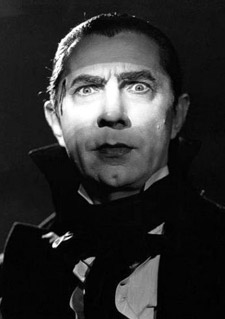 As Nosferatu, Max Schreck may have been cinema's first iconic vampire, but when push comes to shove, the only vampire that really matters is Count Dracula…and the only Count Dracula that really matters is the one portrayed by Bela Lugosi in 1931. Although Lugosi – who, believe it or not, really was born within spitting distance of the Transylvania border – had been an actor for years in his native Hungary as well as Germany, it wasn't until making the move to America in the early 1920s that he truly embarked on his path to Hollywood. There's no question that Lugosi's performance as Dracula is the most iconic of all time (as our own Mr. Westal said, "If someone says, "Talk like a vampire," you don't launch into a Gary Oldman or Christopher Lee impression"), but what do you do when your performance is too iconic? In Lugosi's case, he wasn't exactly thrilled that he'd been forced into the niche of playing "the boogey man" – his phrase – almost exclusively, but he did the best he could with the situation. Still, it must've hurt when he turned in a perfectly fine performance alongside Greta Garbo in the comedy "Ninotchka," only to find no change in his fortunes. As those who've seen Tim Burton's "Ed Wood" know, Lugosi's later years found him suffering through a stream of grade-B (and lower) films, and when the grim reaper finally came to call…yes, Bauhaus fans, Bela Lugosi's dead…he was laid to rest wearing one of his Dracula outfits. Now that's some serious typecasting. – WH
As Nosferatu, Max Schreck may have been cinema's first iconic vampire, but when push comes to shove, the only vampire that really matters is Count Dracula…and the only Count Dracula that really matters is the one portrayed by Bela Lugosi in 1931. Although Lugosi – who, believe it or not, really was born within spitting distance of the Transylvania border – had been an actor for years in his native Hungary as well as Germany, it wasn't until making the move to America in the early 1920s that he truly embarked on his path to Hollywood. There's no question that Lugosi's performance as Dracula is the most iconic of all time (as our own Mr. Westal said, "If someone says, "Talk like a vampire," you don't launch into a Gary Oldman or Christopher Lee impression"), but what do you do when your performance is too iconic? In Lugosi's case, he wasn't exactly thrilled that he'd been forced into the niche of playing "the boogey man" – his phrase – almost exclusively, but he did the best he could with the situation. Still, it must've hurt when he turned in a perfectly fine performance alongside Greta Garbo in the comedy "Ninotchka," only to find no change in his fortunes. As those who've seen Tim Burton's "Ed Wood" know, Lugosi's later years found him suffering through a stream of grade-B (and lower) films, and when the grim reaper finally came to call…yes, Bauhaus fans, Bela Lugosi's dead…he was laid to rest wearing one of his Dracula outfits. Now that's some serious typecasting. – WH
Anthony Perkins, AKA Norman Bates
 Here's a guy who genuinely could have been one of the great character actors, if only Hitchcock hadn't come along and cast him as one of the most iconic movie characters of the '60s. These days, a cross-dressing killer with mother issues may seem old hat, but it's easy to forget that in 1960, everything about Norman Bates was revolutionary. He was the monster living next door, and it scared the hell out of people. Afterwards, he continued to work, but in projects that were never as memorable as "Psycho." The bulk of his other film work was eventually forgotten by most, but Bates was permanently lodged in people's minds. He finally, after 23 years, agreed to play the part once again in 1983's "Psycho II," a move the led to him getting cast in Norman Bates-type roles in movies such as "Crimes of Passion" and "Edge of Sanity." Clearly he was riding the gravy train by this point, as he also returned to the role another two times: "Psycho III" (which he also directed) came out in '86, and 1990 featured his final Bates outing, the TV movie "Psycho IV: The Beginning," in which Henry Thomas played the teenage Bates while Perkins reminisced on a radio talk show. Mother would not be happy. – RR
Here's a guy who genuinely could have been one of the great character actors, if only Hitchcock hadn't come along and cast him as one of the most iconic movie characters of the '60s. These days, a cross-dressing killer with mother issues may seem old hat, but it's easy to forget that in 1960, everything about Norman Bates was revolutionary. He was the monster living next door, and it scared the hell out of people. Afterwards, he continued to work, but in projects that were never as memorable as "Psycho." The bulk of his other film work was eventually forgotten by most, but Bates was permanently lodged in people's minds. He finally, after 23 years, agreed to play the part once again in 1983's "Psycho II," a move the led to him getting cast in Norman Bates-type roles in movies such as "Crimes of Passion" and "Edge of Sanity." Clearly he was riding the gravy train by this point, as he also returned to the role another two times: "Psycho III" (which he also directed) came out in '86, and 1990 featured his final Bates outing, the TV movie "Psycho IV: The Beginning," in which Henry Thomas played the teenage Bates while Perkins reminisced on a radio talk show. Mother would not be happy. – RR
Jason Mewes & Kevin Smith, AKA Jay & Silent Bob
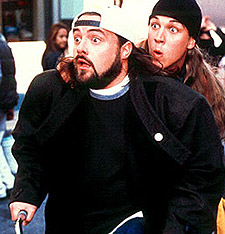 We're included both of these gentlemen in one listing because it's almost impossible to think of them separately. As the story goes, Kevin Smith had intended to play the role of Randal Graves in "Clerks" (he has said that this is why Randal has the best lines in the film), but when it became apparent that helming the film was going to take up too much of his time, he deferred to Jeff Anderson in the role and took on the lesser part of Silent Bob. As for Jason Mewes, however, one gets the impression that he pretty much is Jay, so there wasn't a great deal of acting involved there. Since the View Askew-niverse wrapped up with "Clerks II," Mewes has still managed to work steadily, but trying to escape from playing a drug dealer by appearing in "High Hopes," a film revolving around a bunch of guys trying to steal government marijuana, isn't exactly what you'd call stretching one's wings, and when Mewes appeared alongside Paris Hilton in "Bottoms Up," his best friend was played by…guess who?…Kevin Smith. Even in his other roles (most of which have been in films that have gone straight to video), it's hard to get past his inherent Jay-ness. As for Smith, his regular behind-the-camera gigs have kept him from working very hard to get away from the role of Silent Bob, but while we'll give him credit for his performances in "Catch and Release" and "Live Free and Die Hard," the problem is that…well, the guy is Silent Bob. The only difference is that, once you get him talking, you'll be hard pressed to ever get Kevin Smith to be silent again. As such, he's probably going to be stuck being called by his character's name for the rest of his life. – WH
We're included both of these gentlemen in one listing because it's almost impossible to think of them separately. As the story goes, Kevin Smith had intended to play the role of Randal Graves in "Clerks" (he has said that this is why Randal has the best lines in the film), but when it became apparent that helming the film was going to take up too much of his time, he deferred to Jeff Anderson in the role and took on the lesser part of Silent Bob. As for Jason Mewes, however, one gets the impression that he pretty much is Jay, so there wasn't a great deal of acting involved there. Since the View Askew-niverse wrapped up with "Clerks II," Mewes has still managed to work steadily, but trying to escape from playing a drug dealer by appearing in "High Hopes," a film revolving around a bunch of guys trying to steal government marijuana, isn't exactly what you'd call stretching one's wings, and when Mewes appeared alongside Paris Hilton in "Bottoms Up," his best friend was played by…guess who?…Kevin Smith. Even in his other roles (most of which have been in films that have gone straight to video), it's hard to get past his inherent Jay-ness. As for Smith, his regular behind-the-camera gigs have kept him from working very hard to get away from the role of Silent Bob, but while we'll give him credit for his performances in "Catch and Release" and "Live Free and Die Hard," the problem is that…well, the guy is Silent Bob. The only difference is that, once you get him talking, you'll be hard pressed to ever get Kevin Smith to be silent again. As such, he's probably going to be stuck being called by his character's name for the rest of his life. – WH
Bruce Campbell, AKA Ash
 No one could have imagined how big of a cult sensation "The Evil Dead" would become back in 1981, but while the low-budget horror classic served as a springboard for director Sam Raimi into the big leagues, the film's star, Bruce Campbell, was left in the dust. Though he revived the character of the smart-mouthed, chainsaw-wielding Ash for two more sequels, Campbell spent a lifetime trying to distance himself from the iconic role – so much so that he's been known to sign autographs as Bruce "Don't Call Me Ash" Campbell. When he finally did put the character to rest in 1992's "Army of Darkness," the Michigan-born actor found it difficult to find any sort of decent work. Two failed (but relatively good) TV series later, and the only thing Campbell had to show for himself was a recurring stint on the Raimi-produced "Hercules: The Legendary Journeys" and a handful of generic hero-type roles in a slew of made-for-TV movies. Campbell came awfully close to reinventing himself as an elderly Elvis Presley in 2002's "Bubba Ho-tep," but despite an award-worthy performance, the film failed to perform as anything other than a fun midnight movie. The actor eventually embraced his notoriety as a B-movie action hero in the horror/comedy send-up, "My Name Is Bruce," and has even carved out a nice role for himself in the USA spy drama, "Burn Notice," but don't think for a second that it's quelled the cries for another "Evil Dead" film. The good news? Raimi and Campbell have hinted that something's in the works. – Jason Zingale
No one could have imagined how big of a cult sensation "The Evil Dead" would become back in 1981, but while the low-budget horror classic served as a springboard for director Sam Raimi into the big leagues, the film's star, Bruce Campbell, was left in the dust. Though he revived the character of the smart-mouthed, chainsaw-wielding Ash for two more sequels, Campbell spent a lifetime trying to distance himself from the iconic role – so much so that he's been known to sign autographs as Bruce "Don't Call Me Ash" Campbell. When he finally did put the character to rest in 1992's "Army of Darkness," the Michigan-born actor found it difficult to find any sort of decent work. Two failed (but relatively good) TV series later, and the only thing Campbell had to show for himself was a recurring stint on the Raimi-produced "Hercules: The Legendary Journeys" and a handful of generic hero-type roles in a slew of made-for-TV movies. Campbell came awfully close to reinventing himself as an elderly Elvis Presley in 2002's "Bubba Ho-tep," but despite an award-worthy performance, the film failed to perform as anything other than a fun midnight movie. The actor eventually embraced his notoriety as a B-movie action hero in the horror/comedy send-up, "My Name Is Bruce," and has even carved out a nice role for himself in the USA spy drama, "Burn Notice," but don't think for a second that it's quelled the cries for another "Evil Dead" film. The good news? Raimi and Campbell have hinted that something's in the works. – Jason Zingale
Judd Nelson, AKA Bender
 You can't help but think that when Judd Nelson read the script for "The Breakfast Club," he triumphantly pumped his fist in the air in the same manner as his character John Bender in that movie's iconic final scene. Bender provided Nelson with a showcase to display the actor's versatility; he's funny yet insightful, tough yet cowardly, and most importantly he's eminently quotable. It's the kind of role that few grown-up actors ever get the chance to play, and Nelson, then a mere 25 and with only two movies to his credit at the time of its release, knocked it out of the park. His star seemed destined to rise even higher with the release of the Brat Pack dramedy "St. Elmo's Fire" a mere four months after "Breakfast Club," but alas, only John Parr managed to score a hit with that one. Nelson continued to stay busy in the ensuing years, trying his hand at anything from broad comedy ("From the Hip") to crime dramas ("Blue City," "New Jack City") and even provided the voice of Rodimus Prime in the original animated "Transformers" movie. However, most of those projects did poorly – Nelson even received Razzie nominations for his work in "Blue City" and "From the Hip" – or in the case of "New Jack City," succeeded for reasons other than Nelson's involvement. He had a three-season stint as Brooke Shields' almost-brother-in-law (and boss) on "Suddenly Susan," but when he made an appearance on a 2007 episode of "Family Guy," it was, you guessed it, as John Bender. Fortunately for Nelson, he never seems to have trouble finding work; that next Bender-esque role, however, continues to elude him. – DM
You can't help but think that when Judd Nelson read the script for "The Breakfast Club," he triumphantly pumped his fist in the air in the same manner as his character John Bender in that movie's iconic final scene. Bender provided Nelson with a showcase to display the actor's versatility; he's funny yet insightful, tough yet cowardly, and most importantly he's eminently quotable. It's the kind of role that few grown-up actors ever get the chance to play, and Nelson, then a mere 25 and with only two movies to his credit at the time of its release, knocked it out of the park. His star seemed destined to rise even higher with the release of the Brat Pack dramedy "St. Elmo's Fire" a mere four months after "Breakfast Club," but alas, only John Parr managed to score a hit with that one. Nelson continued to stay busy in the ensuing years, trying his hand at anything from broad comedy ("From the Hip") to crime dramas ("Blue City," "New Jack City") and even provided the voice of Rodimus Prime in the original animated "Transformers" movie. However, most of those projects did poorly – Nelson even received Razzie nominations for his work in "Blue City" and "From the Hip" – or in the case of "New Jack City," succeeded for reasons other than Nelson's involvement. He had a three-season stint as Brooke Shields' almost-brother-in-law (and boss) on "Suddenly Susan," but when he made an appearance on a 2007 episode of "Family Guy," it was, you guessed it, as John Bender. Fortunately for Nelson, he never seems to have trouble finding work; that next Bender-esque role, however, continues to elude him. – DM
Jon Heder, AKA Napoleon Dynamite
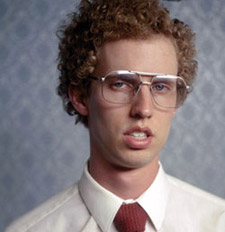 Much like the boy wizard who inspired this feature, it's probably a little early to be declaring Jon Heder forever Napoleon Dynamite, but based on his small body of work thus far, it certainly gets closer to becoming true every year. For all intents and purposes, "Napoleon Dynamite" should have never become the pop culture phenomenon that swept the nation in the summer of 2004, but after earning strong buzz at Sundance several months earlier, the quirky high school comedy became the year's official Little Indie That Could. Though the film's script was certainly original enough to warrant attention, it was Heder's performance as the geek chic title character that made it so oddly enjoyable. Donning a wardrobe consisting of outdated specs and half-worn moon boots, as well as the now iconic burnt-orange, lopsided afro, Heder created a character so incredible dorky that he would have fit right in with the Lambda Lambda Lambdas. Heder certainly made the most of his 15 minutes of fame by booking as many gigs as possible over the next few years – including some pretty high-profile films alongside the likes of Reese Witherspoon ("Just Like Heaven") and Will Ferrell ("Blades of Glory") – but even without the hair and costume, it was virtually impossible to look at him and not think of Napoleon Dynamite. The fact that his acting skills are somewhat limited to playing the dork/loser/doofus only makes his chances of escaping typecasting even less likely, but there's still time to prove us wrong. – JZ
Much like the boy wizard who inspired this feature, it's probably a little early to be declaring Jon Heder forever Napoleon Dynamite, but based on his small body of work thus far, it certainly gets closer to becoming true every year. For all intents and purposes, "Napoleon Dynamite" should have never become the pop culture phenomenon that swept the nation in the summer of 2004, but after earning strong buzz at Sundance several months earlier, the quirky high school comedy became the year's official Little Indie That Could. Though the film's script was certainly original enough to warrant attention, it was Heder's performance as the geek chic title character that made it so oddly enjoyable. Donning a wardrobe consisting of outdated specs and half-worn moon boots, as well as the now iconic burnt-orange, lopsided afro, Heder created a character so incredible dorky that he would have fit right in with the Lambda Lambda Lambdas. Heder certainly made the most of his 15 minutes of fame by booking as many gigs as possible over the next few years – including some pretty high-profile films alongside the likes of Reese Witherspoon ("Just Like Heaven") and Will Ferrell ("Blades of Glory") – but even without the hair and costume, it was virtually impossible to look at him and not think of Napoleon Dynamite. The fact that his acting skills are somewhat limited to playing the dork/loser/doofus only makes his chances of escaping typecasting even less likely, but there's still time to prove us wrong. – JZ
Ralph Macchio, AKA The Karate Kid
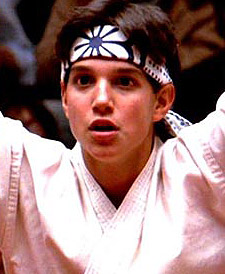 It’s easy to imagine Ralph Macchio sitting at home, drinking Scotch in his boxers and watching “The Outsiders” over and over again, wondering what his career would’ve been like if his next movie hadn’t been “The Karate Kid.” It’s not that the decision to appear in a film about a teenager who learns to defend himself with the aid of a wizened Japanese karate instructor was a bad move. It’s just that…well, have you looked at the cast of “The Outsiders”? Tom Cruise, Matt Dillon, Diane Lane, Rob Lowe, Patrick Swayze, Emilio Estevez…geez, even C. Thomas Howell is remembered for more than one role! At first, Macchio tried to expand his palate, tackling the Robert Johnson inspired “Crossroads,” but when he dared to play Daniel-San for two “Karate Kid” sequels as well, it became hard to think of him as anyone else. But here’s the thing: Macchio really wasn’t that memorable an actor to begin with. This is perhaps most evident with his lone high-profile role of his post-“Kid” career, playing Billy Gambini in “My Cousin Vinny.” Be honest, now: how often have you come across the film on cable and found yourself thinking, “Oh, that’s right: I forgot Ralph Macchio was in this”? If you look at his credits for the past several years, they’re rather paltry, and two of the most high-profile gigs – “Entourage” and “Head Case” – have found him playing himself. Dare we suggest that this may be where his greatest strength as an actor lies? –WH
It’s easy to imagine Ralph Macchio sitting at home, drinking Scotch in his boxers and watching “The Outsiders” over and over again, wondering what his career would’ve been like if his next movie hadn’t been “The Karate Kid.” It’s not that the decision to appear in a film about a teenager who learns to defend himself with the aid of a wizened Japanese karate instructor was a bad move. It’s just that…well, have you looked at the cast of “The Outsiders”? Tom Cruise, Matt Dillon, Diane Lane, Rob Lowe, Patrick Swayze, Emilio Estevez…geez, even C. Thomas Howell is remembered for more than one role! At first, Macchio tried to expand his palate, tackling the Robert Johnson inspired “Crossroads,” but when he dared to play Daniel-San for two “Karate Kid” sequels as well, it became hard to think of him as anyone else. But here’s the thing: Macchio really wasn’t that memorable an actor to begin with. This is perhaps most evident with his lone high-profile role of his post-“Kid” career, playing Billy Gambini in “My Cousin Vinny.” Be honest, now: how often have you come across the film on cable and found yourself thinking, “Oh, that’s right: I forgot Ralph Macchio was in this”? If you look at his credits for the past several years, they’re rather paltry, and two of the most high-profile gigs – “Entourage” and “Head Case” – have found him playing himself. Dare we suggest that this may be where his greatest strength as an actor lies? –WH
Jim Varney, AKA Ernest
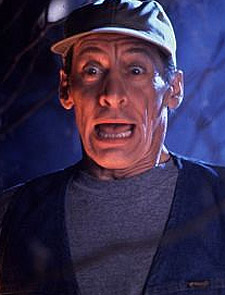 One of the greatest yet ultimately saddest moments in the recorded history of actor Jim Varney came with a segment that the NBC Nightly News did about him in 1984. At the time, Varney had yet to do a single one of his famed “Ernest” movies, but he’d done a plethora of commercials which had earned him considerable regional fame, and during the segment (which you can see for yourself right here), the man delivers Shakespearean dialogue in a manner which instantly dismisses any theory that he was, as an actor, a mere one-trick pony. Unfortunately, the world rarely saw him outside of his Ernest guise, and if truth be told, Varney didn’t try all that hard to get away from it, doing nine “Ernest” movies, a TV series, and more commercials than you’d ever want to try and count. He popped up in several other films during his career, but the only one of real note was his performance as Jed Clampett in “The Beverly Hillbillies,” and even that was ultimately playing to the Southern stereotype that he’d already perfected. We’d be remiss if we didn’t also remember him for his voiceover work as Slinky Dog in the “Toy Story” films (though we’re already sad at the thought of the 3rd film without him), but that’s but a slight recollection. To virtually everyone, Jim Varney was Ernest P. Worrell…and always will be. Know what I mean, Vern? – WH
One of the greatest yet ultimately saddest moments in the recorded history of actor Jim Varney came with a segment that the NBC Nightly News did about him in 1984. At the time, Varney had yet to do a single one of his famed “Ernest” movies, but he’d done a plethora of commercials which had earned him considerable regional fame, and during the segment (which you can see for yourself right here), the man delivers Shakespearean dialogue in a manner which instantly dismisses any theory that he was, as an actor, a mere one-trick pony. Unfortunately, the world rarely saw him outside of his Ernest guise, and if truth be told, Varney didn’t try all that hard to get away from it, doing nine “Ernest” movies, a TV series, and more commercials than you’d ever want to try and count. He popped up in several other films during his career, but the only one of real note was his performance as Jed Clampett in “The Beverly Hillbillies,” and even that was ultimately playing to the Southern stereotype that he’d already perfected. We’d be remiss if we didn’t also remember him for his voiceover work as Slinky Dog in the “Toy Story” films (though we’re already sad at the thought of the 3rd film without him), but that’s but a slight recollection. To virtually everyone, Jim Varney was Ernest P. Worrell…and always will be. Know what I mean, Vern? – WH
Mark Hamill, AKA Luke Skywalker
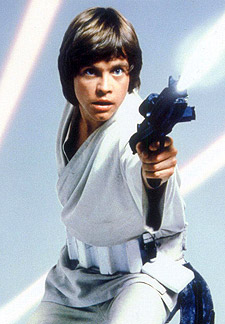 Mark Hamill may not have had much in the way of cinematic credits when he was introduced to the world as Luke Skywalker, future Jedi, in "Star Wars," but he'd sure as heck done his time on the TV circuit, appearing on everything from "The Partridge Family" to "The Streets of San Francisco," even playing a guy named Doobie Wheeler on "The Texas Wheelers." But when you're the star of the greatest space opera of all time ,you've got to expect a certain amount of blowback, and Hamill got it in spades. Despite starring in the fondly remembered "Corvette Summer" with Annie Potts and being directed by Samuel Fuller in the critically acclaimed "The Big Red One," things just weren't happening for the guy outside of the "Star Wars" universe…well, unless you consider being third-billed to Kristy McNichol and Dennis Quaid in "The Night the Lights Went Out in Georgia" to be happening, that is. Post- "Return of the Jedi," Hamill did a few straight-to-video features before realizing that he might well find more luck off the camera and in the recording booth. Having already worked for Hanna-Barbera in the early '70s, it was a quick transition for Hamill to return to the world of voiceover acting, and it was a move that paid off in a big way. Whether you've known it or not, you've heard his dulcet tones providing voices for "The Adventures of Batman & Robin" (The Joker), "Spider-Man" (Hobgoblin), "Avatar: The Last Airbender" (Ozai), and "Super Robot Monkey Team Hyperforce Go!" (The Skeleton King), among dozens of others. Good for him, we say. But the truth of the matter remains: when you see his face, Mark Hamill is still Luke Skywalker. – WH
Mark Hamill may not have had much in the way of cinematic credits when he was introduced to the world as Luke Skywalker, future Jedi, in "Star Wars," but he'd sure as heck done his time on the TV circuit, appearing on everything from "The Partridge Family" to "The Streets of San Francisco," even playing a guy named Doobie Wheeler on "The Texas Wheelers." But when you're the star of the greatest space opera of all time ,you've got to expect a certain amount of blowback, and Hamill got it in spades. Despite starring in the fondly remembered "Corvette Summer" with Annie Potts and being directed by Samuel Fuller in the critically acclaimed "The Big Red One," things just weren't happening for the guy outside of the "Star Wars" universe…well, unless you consider being third-billed to Kristy McNichol and Dennis Quaid in "The Night the Lights Went Out in Georgia" to be happening, that is. Post- "Return of the Jedi," Hamill did a few straight-to-video features before realizing that he might well find more luck off the camera and in the recording booth. Having already worked for Hanna-Barbera in the early '70s, it was a quick transition for Hamill to return to the world of voiceover acting, and it was a move that paid off in a big way. Whether you've known it or not, you've heard his dulcet tones providing voices for "The Adventures of Batman & Robin" (The Joker), "Spider-Man" (Hobgoblin), "Avatar: The Last Airbender" (Ozai), and "Super Robot Monkey Team Hyperforce Go!" (The Skeleton King), among dozens of others. Good for him, we say. But the truth of the matter remains: when you see his face, Mark Hamill is still Luke Skywalker. – WH
Robert Englund, AKA Freddy Krueger
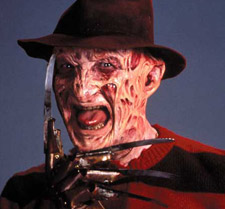 You wouldn't think that a man whose true face is buried under a ton of burned-flesh makeup would be sufficiently recognizable to be typecast. Leave it to Mr. Englund, however, to manage it, anyway. In the days before he portrayed the child-murdering, claw-wielding Freddy Krueger, he'd narrated the classic surfing flick, "Big Wednesday," and done a fair amount of movie and TV work, most notably as the Visitor named Willie in "V." After the first "Nightmare on Elm Street" flick, however, it appeared that Englund had finally found his wheelhouse: the horror industry. His is an interesting case, since it seems pretty clear that he never really tried to escape from the legacy of Freddy Krueger. If you look back at his resume, he basically just dived headlong into the fray of the frightening, first taking the opportunity to direct his own horror film ("976-EVIL"), then appearing as the title character in a remake of "Phantom of the Opera," playing the Marquis de Sade in "Night Terrors," and showing up in such semi-classics as "The Mangler," "Wishmaster," "Urban Legend," and "Strangeland." Englund hasn't played Mr. Krueger since 2003's "Freddy vs. Jason," but nor has he dared to step outside of the realm of the macabre. We don't anticipate that will change anytime soon. – WH
You wouldn't think that a man whose true face is buried under a ton of burned-flesh makeup would be sufficiently recognizable to be typecast. Leave it to Mr. Englund, however, to manage it, anyway. In the days before he portrayed the child-murdering, claw-wielding Freddy Krueger, he'd narrated the classic surfing flick, "Big Wednesday," and done a fair amount of movie and TV work, most notably as the Visitor named Willie in "V." After the first "Nightmare on Elm Street" flick, however, it appeared that Englund had finally found his wheelhouse: the horror industry. His is an interesting case, since it seems pretty clear that he never really tried to escape from the legacy of Freddy Krueger. If you look back at his resume, he basically just dived headlong into the fray of the frightening, first taking the opportunity to direct his own horror film ("976-EVIL"), then appearing as the title character in a remake of "Phantom of the Opera," playing the Marquis de Sade in "Night Terrors," and showing up in such semi-classics as "The Mangler," "Wishmaster," "Urban Legend," and "Strangeland." Englund hasn't played Mr. Krueger since 2003's "Freddy vs. Jason," but nor has he dared to step outside of the realm of the macabre. We don't anticipate that will change anytime soon. – WH
Juliette Lewis, AKA Generic White Trash
 Dear, sweet Juliette, why did you do it? As the '80s ended and the '90s began, you were doing so well with your acting career, showing off your versatility by turning in performances in both comedies ("National Lampoon's Christmas Vacation") and dramas ("Cape Fear"), and you were really on our radar as an up-and-coming actress to keep an eye out for. But then it happened: you went white trash on us. First, there was Adele in "Kalifornia," where you played opposite Brad Pitt and turned in a performance where we truly believed you were sweet as pie but as dumb as a box of rocks. Then, you decided to take on Oliver Stone's "Natural Born Killers," and we came to know you as Mallory Knox, who was like a pissed-off, take-no-shit version of Adele. Honey, when you do two characters that similar to each other that close together, that's how people are going to remember you. Not that you didn't try to escape your destiny, of course, but apparently your "Natural Born Killers" co-star, Robert Downey Jr., neglected to tell you that "you never go full retard," because that's exactly what you did in "The Other Sister." We've never forgiven you for that, you know. Oh, but of course you know, because since then, you haven't really tried to step very far outside of your box, have you? "Old School," "Starsky and Hutch," even "Catch and Release," they've all been characters who were less than brilliant and far from highly educated. Hey, whatever works for you, Juliette. – WH
Dear, sweet Juliette, why did you do it? As the '80s ended and the '90s began, you were doing so well with your acting career, showing off your versatility by turning in performances in both comedies ("National Lampoon's Christmas Vacation") and dramas ("Cape Fear"), and you were really on our radar as an up-and-coming actress to keep an eye out for. But then it happened: you went white trash on us. First, there was Adele in "Kalifornia," where you played opposite Brad Pitt and turned in a performance where we truly believed you were sweet as pie but as dumb as a box of rocks. Then, you decided to take on Oliver Stone's "Natural Born Killers," and we came to know you as Mallory Knox, who was like a pissed-off, take-no-shit version of Adele. Honey, when you do two characters that similar to each other that close together, that's how people are going to remember you. Not that you didn't try to escape your destiny, of course, but apparently your "Natural Born Killers" co-star, Robert Downey Jr., neglected to tell you that "you never go full retard," because that's exactly what you did in "The Other Sister." We've never forgiven you for that, you know. Oh, but of course you know, because since then, you haven't really tried to step very far outside of your box, have you? "Old School," "Starsky and Hutch," even "Catch and Release," they've all been characters who were less than brilliant and far from highly educated. Hey, whatever works for you, Juliette. – WH
Kermit the Frog
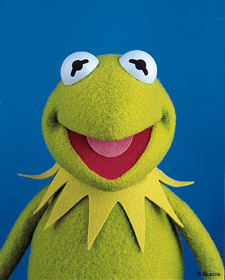 It's tough being a little frog with big dreams, but clearly, over the years, Kermit has demonstrated that he knows how to make the Rainbow Connection. But behind the scenes, his personal life must be fraught with insecurity. Here's a guy that started out as a bit player on “Sesame Street” and eventually moved on to hosting his own variety show. After that, the movies beckoned, but he's never really been able to do much of anything outside of play Kermit the Frog. It's the one role he cannot escape, and it's not for a lack of trying. While he embraced his most famous persona in the first few Muppet movies, he attempted to tackle more serious roles such as Bob Cratchit in "The Muppet Christmas Carol," Captain Abraham Smollett in "Muppet Treasure Island," and the Scarecrow in the utterly dire "The Muppets' Wizard of Oz." It seemed the harder that Kermit tried to break away from his own personality, the less successful the results, and people became disenchanted with the franchise. He's not been seen too often as of late, but let's all hope that he hasn't turned to alcohol and drugs, like many a frustrated performer before him. It ain't easy bein' green, indeed. – RR
It's tough being a little frog with big dreams, but clearly, over the years, Kermit has demonstrated that he knows how to make the Rainbow Connection. But behind the scenes, his personal life must be fraught with insecurity. Here's a guy that started out as a bit player on “Sesame Street” and eventually moved on to hosting his own variety show. After that, the movies beckoned, but he's never really been able to do much of anything outside of play Kermit the Frog. It's the one role he cannot escape, and it's not for a lack of trying. While he embraced his most famous persona in the first few Muppet movies, he attempted to tackle more serious roles such as Bob Cratchit in "The Muppet Christmas Carol," Captain Abraham Smollett in "Muppet Treasure Island," and the Scarecrow in the utterly dire "The Muppets' Wizard of Oz." It seemed the harder that Kermit tried to break away from his own personality, the less successful the results, and people became disenchanted with the franchise. He's not been seen too often as of late, but let's all hope that he hasn't turned to alcohol and drugs, like many a frustrated performer before him. It ain't easy bein' green, indeed. – RR
Harrison Ford, Once Known As Han Solo/Indiana Jones
 Not many actors get the opportunity to battle back against typecasting by playing different characters in two of the most successful motion picture franchises of all time, but you've got to admit: it worked out pretty damned well for Harrison Ford. For a guy who was all but ready to give up the glory of acting for a life in carpentry, it must've seemed thoroughly unreal for Ford when he picked up the role of the smuggler and mercenary known as Han Solo and subsequently saw "Star Wars" go through the roof. After that, he didn't have much choice but to move forward in his career as a professional thespian, but aside from his role as Colonel Lucas in Francis Ford Coppola's "Apocalypse Now," most of his work was in grade-B films. (Look, I like "Force 10 from Navarone" as much as the next guy, but it ain't high art.) Good thing, then, that Steven Spielberg and George Lucas decided to bring him about to play the serial-inspired action hero in "Raiders of the Lost Ark." In between playing Han Solo and Indiana Jones, Ford became another sci-fi icon by playing Rick Deckard in Ridley Scott's "Blade Runner," but after wrapping "Temple of Doom," he clearly decided to cure his case of sequel-itis, earning his first Academy Award nomination for playing Detective John Book in "Witness." It soon became apparent that Ford was a bankable actor no matter who he was playing, and once that happened, any possibility of typecasting was gone…well, unless you consider "action hero" to be typecasting. It's still not easy to accept the words "Harrison Ford" and "comedy" in the same sentence, but given the success of his performances as Jack Ryan, Dr. Richard Kimble, and President James Marshall, just to name a few, you sure can't say that the man's locked into any one character.
Not many actors get the opportunity to battle back against typecasting by playing different characters in two of the most successful motion picture franchises of all time, but you've got to admit: it worked out pretty damned well for Harrison Ford. For a guy who was all but ready to give up the glory of acting for a life in carpentry, it must've seemed thoroughly unreal for Ford when he picked up the role of the smuggler and mercenary known as Han Solo and subsequently saw "Star Wars" go through the roof. After that, he didn't have much choice but to move forward in his career as a professional thespian, but aside from his role as Colonel Lucas in Francis Ford Coppola's "Apocalypse Now," most of his work was in grade-B films. (Look, I like "Force 10 from Navarone" as much as the next guy, but it ain't high art.) Good thing, then, that Steven Spielberg and George Lucas decided to bring him about to play the serial-inspired action hero in "Raiders of the Lost Ark." In between playing Han Solo and Indiana Jones, Ford became another sci-fi icon by playing Rick Deckard in Ridley Scott's "Blade Runner," but after wrapping "Temple of Doom," he clearly decided to cure his case of sequel-itis, earning his first Academy Award nomination for playing Detective John Book in "Witness." It soon became apparent that Ford was a bankable actor no matter who he was playing, and once that happened, any possibility of typecasting was gone…well, unless you consider "action hero" to be typecasting. It's still not easy to accept the words "Harrison Ford" and "comedy" in the same sentence, but given the success of his performances as Jack Ryan, Dr. Richard Kimble, and President James Marshall, just to name a few, you sure can't say that the man's locked into any one character.
Sigourney Weaver, OKA Ellen Ripley
 "Alien" wasn't Sigourney Weaver's first film, but for all practical purposes, it might as well have been. To look at her IMDb listing, the only other credits to her name at the time were as one of Alvy Singer's unnamed dates in "Annie Hall" and as…well, actually, her role in the 1978 film "Madmen" was apparently so small as to not even have a character name. (That, or no one who works for IMDb has ever seen it, a theory which seems more probable when you realize that almost no one else in the film is listed with a character name.) The fact that she's since done three sequels to "Alien," even earning an Academy Award nomination for her performance in the second film of the quadrilogy, makes it all the more surprising that she's not more consistently referred to as Sigourney "Ripley" Weaver. Her solution? She mixed it up. A lot. By the time she got around to making "Aliens," she'd already done a comedy with Chevy Chase ("Deal of the Century"), worked alongside Mel Gibson in Peter Weir's "The Year of Living Dangerously," and participated in the stellar ensemble of Peter Yates' "Eyewitness." (Never seen it? It also stars William Hurt, Christopher Plummer, James Woods, and Morgan Freeman!) Of course, it also didn't hurt that she found herself playing a part in the multi-million dollar success story of "Ghostbusters" during that pre-"Aliens" time frame. Looking at her credits, it's clear that Weaver has never been afraid to switch from one genre to the next, providing top-notch dramatic and comedic performances at the drop of a hat. Yes, we're always happy to see her fighting back against her acid-blooded alien nemeses, but she's such a strong actress that, really, we're happy to see her anywhere.
"Alien" wasn't Sigourney Weaver's first film, but for all practical purposes, it might as well have been. To look at her IMDb listing, the only other credits to her name at the time were as one of Alvy Singer's unnamed dates in "Annie Hall" and as…well, actually, her role in the 1978 film "Madmen" was apparently so small as to not even have a character name. (That, or no one who works for IMDb has ever seen it, a theory which seems more probable when you realize that almost no one else in the film is listed with a character name.) The fact that she's since done three sequels to "Alien," even earning an Academy Award nomination for her performance in the second film of the quadrilogy, makes it all the more surprising that she's not more consistently referred to as Sigourney "Ripley" Weaver. Her solution? She mixed it up. A lot. By the time she got around to making "Aliens," she'd already done a comedy with Chevy Chase ("Deal of the Century"), worked alongside Mel Gibson in Peter Weir's "The Year of Living Dangerously," and participated in the stellar ensemble of Peter Yates' "Eyewitness." (Never seen it? It also stars William Hurt, Christopher Plummer, James Woods, and Morgan Freeman!) Of course, it also didn't hurt that she found herself playing a part in the multi-million dollar success story of "Ghostbusters" during that pre-"Aliens" time frame. Looking at her credits, it's clear that Weaver has never been afraid to switch from one genre to the next, providing top-notch dramatic and comedic performances at the drop of a hat. Yes, we're always happy to see her fighting back against her acid-blooded alien nemeses, but she's such a strong actress that, really, we're happy to see her anywhere.
Tim Curry, OKA Dr. Frank N. Furter
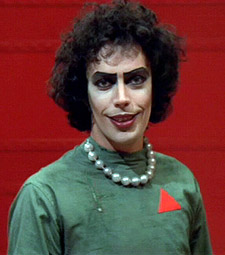 By all counts, playing cinema's most famous singing and dancing cross-dressing alien should have kept Tim Curry from ever working again. It was the perfect fusion of actor and character, and he's so well known for the role, that to this day it seems impossible for anyone else to play the part without falling short somewhere along the way. It remains the role for which he is most famous. But Curry defied the odds by being a damn fine actor, and transforming himself into a wide variety of different characters over the years, and proving just how versatile he really was. He can sing and dance obviously, but he can also tackle serious drama when it comes his way. Look no further than his role as Darkness in Ridley Scott's "Legend," a part that required him to act from beneath mounds of makeup and costume, and yet he does a fantastic job in a role that most actors would've been overwhelmed by. In the very same year he brought the Devil to life, he also gave us Wadsworth, the butler in "Clue," who, in an unusual move for a butler, was arguably the film's lead. In the '90s Curry often played smaller character roles in a wide variety of films ranging from "The Hunt for Red October" to "The Shadow" to "Oscar." One of the great roles of his long career was that of the sleazy Rev. Ray Porter in 1988's rarely seen "Pass the Ammo," a movie for which a DVD release is long overdue. These days he can mostly be found doing loads of voice work for all manner of animation. The multitalented Curry doesn't appear to show any signs of slowing down, and for that we should all be grateful. – RR
By all counts, playing cinema's most famous singing and dancing cross-dressing alien should have kept Tim Curry from ever working again. It was the perfect fusion of actor and character, and he's so well known for the role, that to this day it seems impossible for anyone else to play the part without falling short somewhere along the way. It remains the role for which he is most famous. But Curry defied the odds by being a damn fine actor, and transforming himself into a wide variety of different characters over the years, and proving just how versatile he really was. He can sing and dance obviously, but he can also tackle serious drama when it comes his way. Look no further than his role as Darkness in Ridley Scott's "Legend," a part that required him to act from beneath mounds of makeup and costume, and yet he does a fantastic job in a role that most actors would've been overwhelmed by. In the very same year he brought the Devil to life, he also gave us Wadsworth, the butler in "Clue," who, in an unusual move for a butler, was arguably the film's lead. In the '90s Curry often played smaller character roles in a wide variety of films ranging from "The Hunt for Red October" to "The Shadow" to "Oscar." One of the great roles of his long career was that of the sleazy Rev. Ray Porter in 1988's rarely seen "Pass the Ammo," a movie for which a DVD release is long overdue. These days he can mostly be found doing loads of voice work for all manner of animation. The multitalented Curry doesn't appear to show any signs of slowing down, and for that we should all be grateful. – RR
Julie Andrews, OKA Mary Poppins/Maria
 There was a time when Julie Andrews was sugary, syrupy sweet – the virgin queen of the silver screen. It was around the time she starred in two hugely popular musicals, "Mary Poppins" and "The Sound of Music." She made one movie in between them, the criminally underrated and nearly forgotten "The Americanization of Emily," and afterwards starred in stuff like "Hawaii" and "Star!," but never really broke the sudsy stereotype until she married director Blake Edwards and he started casting her in his movies. The two that really helped her shed her '60s screen personas were "10," in which she played the girlfriend of a philandering Dudley Moore, and most especially "S.O.B.," which echoed her frustrations with her career, and in which she bared her breasts for the world to see – a hugely bold maneuver for someone of her standing at that time of her life. Of course, perhaps the greatest role of her career was that of Victoria Grant, in Edwards' gender-bending musical comedy "Victor/Victoria," a movie that pretty much wrapped up everything Andrews was good at into one hilariously entertaining package. In recent years she's found another outlet for her talents: providing a voice for the Queen in the "Shrek' movies. – RR
There was a time when Julie Andrews was sugary, syrupy sweet – the virgin queen of the silver screen. It was around the time she starred in two hugely popular musicals, "Mary Poppins" and "The Sound of Music." She made one movie in between them, the criminally underrated and nearly forgotten "The Americanization of Emily," and afterwards starred in stuff like "Hawaii" and "Star!," but never really broke the sudsy stereotype until she married director Blake Edwards and he started casting her in his movies. The two that really helped her shed her '60s screen personas were "10," in which she played the girlfriend of a philandering Dudley Moore, and most especially "S.O.B.," which echoed her frustrations with her career, and in which she bared her breasts for the world to see – a hugely bold maneuver for someone of her standing at that time of her life. Of course, perhaps the greatest role of her career was that of Victoria Grant, in Edwards' gender-bending musical comedy "Victor/Victoria," a movie that pretty much wrapped up everything Andrews was good at into one hilariously entertaining package. In recent years she's found another outlet for her talents: providing a voice for the Queen in the "Shrek' movies. – RR
Sean Connery, OKA James Bond
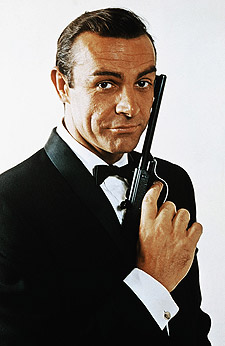 You know how James Bond can be put in the most impossible situation and still escape? By the time the third Bond film, "Goldfinger," launched a worldwide spy craze in 1965, Connery had gone from a little-known television actor to a level of recognition rivaling Mickey Mouse in the space of three years, and his chances of transcending 007 seemed about as likely as Mickey taking the lead in "Macbeth." (A part Connery had actually played on TV.) He turned in strong performances in Alfred Hitchcock's 1964 romantic thriller, "Marnie," and Sidney Lumet's ultra-gritty 1965 military prison drama, "The Hill," but the actor who had once personally disarmed Hollywood gangster Johnny Stompanato was stymied by his own skill at embodying the role of the suave super-assassin. Still, by 1972 Connery had left Bondage – apparently for good – after six films. He began experimenting with facial hair onscreen. He donned a turban for a role as an Arab chieftain in "The Wind and the Lion." He allowed his balding head to appear onscreen for his role in John Huston's "The Man Who Would Be King." The hair grew even thinner when he played a disillusioned Robin Hood opposite Audrey Hepburn in Richard Lester's "Robin and Marian." By 1983 he was a hugely bankable, fully bald star in his own right and far enough away from typecasting that he was ready to shave and re-don his toupee in the appropriately titled non-canonical Bond film, "Never Say Never Again." The movie wasn't so hot, but it was cool. The toupee came off. The mustaches and beards returned, and so did Connery's aging tough-guy roles with megahits like "The Untouchables." In movies, image may not be everything, but it's a lot. – Bob Westal
You know how James Bond can be put in the most impossible situation and still escape? By the time the third Bond film, "Goldfinger," launched a worldwide spy craze in 1965, Connery had gone from a little-known television actor to a level of recognition rivaling Mickey Mouse in the space of three years, and his chances of transcending 007 seemed about as likely as Mickey taking the lead in "Macbeth." (A part Connery had actually played on TV.) He turned in strong performances in Alfred Hitchcock's 1964 romantic thriller, "Marnie," and Sidney Lumet's ultra-gritty 1965 military prison drama, "The Hill," but the actor who had once personally disarmed Hollywood gangster Johnny Stompanato was stymied by his own skill at embodying the role of the suave super-assassin. Still, by 1972 Connery had left Bondage – apparently for good – after six films. He began experimenting with facial hair onscreen. He donned a turban for a role as an Arab chieftain in "The Wind and the Lion." He allowed his balding head to appear onscreen for his role in John Huston's "The Man Who Would Be King." The hair grew even thinner when he played a disillusioned Robin Hood opposite Audrey Hepburn in Richard Lester's "Robin and Marian." By 1983 he was a hugely bankable, fully bald star in his own right and far enough away from typecasting that he was ready to shave and re-don his toupee in the appropriately titled non-canonical Bond film, "Never Say Never Again." The movie wasn't so hot, but it was cool. The toupee came off. The mustaches and beards returned, and so did Connery's aging tough-guy roles with megahits like "The Untouchables." In movies, image may not be everything, but it's a lot. – Bob Westal
Peter Sellers (Inspector Clouseau)
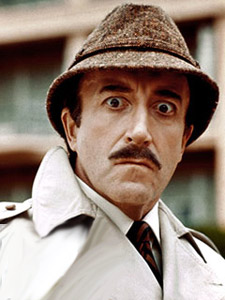 When the idea for this list first started being bandied about amongst the Bullz-Eye writers, one of the first names I threw out as a candidate was Peter Sellers, and while everyone seemed to agree he was a worthwhile candidate, we couldn't really decide on whether or not he'd been Forever Typecast, or if he'd escaped typecasting. The truth is somewhere in between. Ask most any Joe on the street who Peter Sellers played, and you'll likely 9 times out of 10 hear the same answer: Inspector Jacques Clouseau. There's something to be said for that public perception, and no doubt the fact that he played the role five times (six of you count the posthumous release of "Trail of the Pink Panther," in which his performance was comprised of outtakes and flashbacks from the previous films) contributes to the stigma. Nevertheless, many either haven't seen or they've forgotten the cache of work he amassed before, during and after the times he played Clouseau. Who can forget his Clare Quilty in Kubrick's "Lolita," or all three roles he played Stanley's next film, "Dr. Strangelove?" The '60s also saw him in fare like "What's New Pussycat?," "The Party" (in which he played a bumbling Indian), "The Magic Christian," in which he co-starred with Ringo Starr, and the counter-culture comedy "I Love You, Alice B. Toklas." The '70s clearly weren't an easy ride for Sellers, which is no doubt why he kept returning to the safety of Clouseau, although he still managed to find other things to do such as "Murder By Death" and a comedy take on "The Prisoner of Zenda." Finally, in '79, he seemingly beat Clouseau with his Oscar-nominated performance in Hal Ashby's sublime comedy, "Being There," and he passed away shortly after. While many may only remember Sellers for one part, there's an entire subculture of fans devoted to every role of his but Jacques Clouseau. – RR
When the idea for this list first started being bandied about amongst the Bullz-Eye writers, one of the first names I threw out as a candidate was Peter Sellers, and while everyone seemed to agree he was a worthwhile candidate, we couldn't really decide on whether or not he'd been Forever Typecast, or if he'd escaped typecasting. The truth is somewhere in between. Ask most any Joe on the street who Peter Sellers played, and you'll likely 9 times out of 10 hear the same answer: Inspector Jacques Clouseau. There's something to be said for that public perception, and no doubt the fact that he played the role five times (six of you count the posthumous release of "Trail of the Pink Panther," in which his performance was comprised of outtakes and flashbacks from the previous films) contributes to the stigma. Nevertheless, many either haven't seen or they've forgotten the cache of work he amassed before, during and after the times he played Clouseau. Who can forget his Clare Quilty in Kubrick's "Lolita," or all three roles he played Stanley's next film, "Dr. Strangelove?" The '60s also saw him in fare like "What's New Pussycat?," "The Party" (in which he played a bumbling Indian), "The Magic Christian," in which he co-starred with Ringo Starr, and the counter-culture comedy "I Love You, Alice B. Toklas." The '70s clearly weren't an easy ride for Sellers, which is no doubt why he kept returning to the safety of Clouseau, although he still managed to find other things to do such as "Murder By Death" and a comedy take on "The Prisoner of Zenda." Finally, in '79, he seemingly beat Clouseau with his Oscar-nominated performance in Hal Ashby's sublime comedy, "Being There," and he passed away shortly after. While many may only remember Sellers for one part, there's an entire subculture of fans devoted to every role of his but Jacques Clouseau. – RR
You can follow us on Twitter and Facebook for content updates. Also, sign up for our email list for weekly updates and check us out on Google+ as well.











